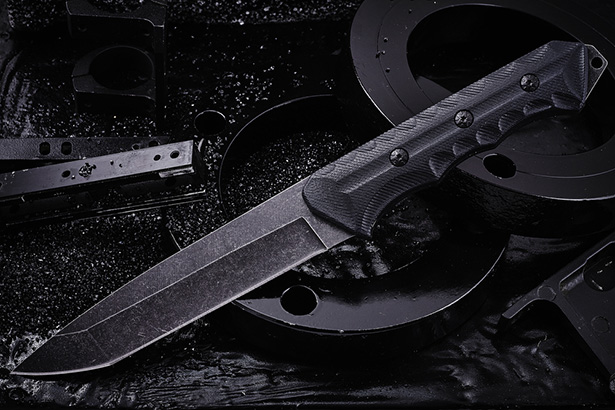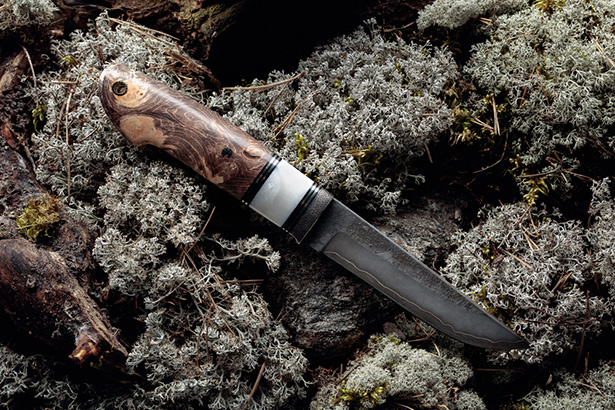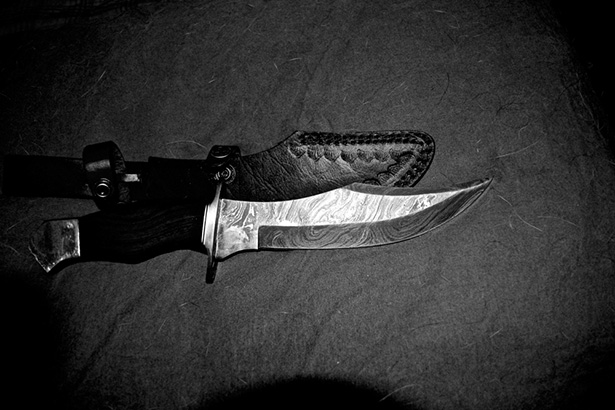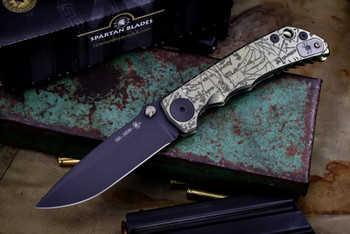How to Stonewash a Knife - The Ultimate Guide
Apr 23rd 2019

Knives are handy tools many people keep with them for help throughout the day. Aside from making it easy to perform tasks, from cutting baling twine to opening packages, pocket knives often have an aesthetic appeal. You can easily customize your pocket or fixed-blade knife by creating an interesting contrast on the blade using this stonewashing technique.
About stonewashing
Stonewashing creates a distressed look on the knife blade by literally distressing the blade using friction. The technique comes from its name, as it involves running a knife blade through the dryer with small stones and a lubricant to create abrasions on the face of the blade.
This technique speeds up the normal aging process and creates a pocketed color effect on the blade, similar to the effect you would expect from an acid wash. The effect works on all different types of knife steel, but it shows up especially well on a darker blade as this provides more contrast.
Before you begin
Before you stonewash your knife blade, keep in mind that disassembling the knife and doing this treatment to the blade nullifies any warranty the knife may come with. Stonewashing also dulls the knife blade, so you’ll have to resharpen it later.
Make It Your Own With One of Our Unique Custom Knives
The effects of stonewashing are highly variable, depending on the type of knife steel, size of the stones and duration of the washing process. Although the final outcome is unpredictable, stonewashing can create custom knives that are truly unique.
Stonewashing supplies
To get started creating your custom knife, you’ll need a knife, five to 10 small stones (about half a thumb’s size), a large plastic jar or container (like an empty mayonnaise jar), nail polish, nail polish remover, a towel, rubber bands, WD-40 or dish soap and a dryer.
The process of stonewashing
- Disassemble the knife and cover the places you do not want to be stonewashed, like the pivot, in nail polish.
- Place the blade in the plastic jar along with the stones and spray some WD-40 or soap and water on top of the rocks.
- Close up the plastic jar and wrap it in the towel. Use rubber bands to secure the towel around the jar so you don’t damage your dryer.
- Put the towel-covered jar in the dryer in a heatless dry setting. This might be called tumble dry or air fluff. Leave it in for 10 to 20 minutes–depending on how dark you want the finish to be.
- Remove the blade and clean it to remove residue. You can use nail polish remover to remove the nail polish. Assemble the knife and sharpen the blade to see the final outcome.
Stonewashing variations

You can switch up the elements of this technique to create slightly different outcomes. Larger rocks might create a splotchy effect while finer abrasives, like sand or walnut shell fragments, can result in an even, matte finish.
Stonewashing or other blade refinishing techniques can revamp the look of small pocket knives to military survival knives. Acid etching is another way to customize your knife blade for an artistic finish.
Acid etching

The type of steel used to make your blade is more important for the acid etching process as different types of steel react differently with acid. People often use ferric chloride for this process; however, you can also use common household acids like citrus, mustard or vinegar.
Use nail polish or vaseline to cover the parts of the blade you don’t want to be etched and then submerge the blade in the acid or use a cotton swab to blot the acid onto the blade. When the treatment is complete, neutralize the acid with water and baking soda and then remove any residue.
Keep Your Knife Protected from Rust with a Quality Knife Storage Kit
.ctaBtn {background:#000;color:#fff;display:table;margin:0 auto;padding:20px;font-weight:700;border:1px solid #000;text-align:center;text-decoration:none;}.ctaBtn:hover {background:#fff;color:#000;}
When working with acid, it is especially important to follow safety precautions. Work in a well-ventilated area with proper eye and skin protection, and dispose of acids properly. If you’re planning on working with ferric chloride, review the material safety data sheet for the best information about how to safely handle the substance.
Upgrade your knife collection
You can easily upgrade your blades to custom knives by using these simple and inexpensive refinishing techniques.
Stonewashing is an extremely affordable and beginner-friendly option that makes use of common household equipment for a stunning finish while acid washing can be used to create interesting effects on the blade surface for the more adventurous knife customizers.
Call or text eKnives at (423) 525-9477 to learn more about proper knife care and blade steel from our knowledgeable staff. You can also explore our website and browse our blog to learn more about our knife selection, custom knife makers and knife accessories.

